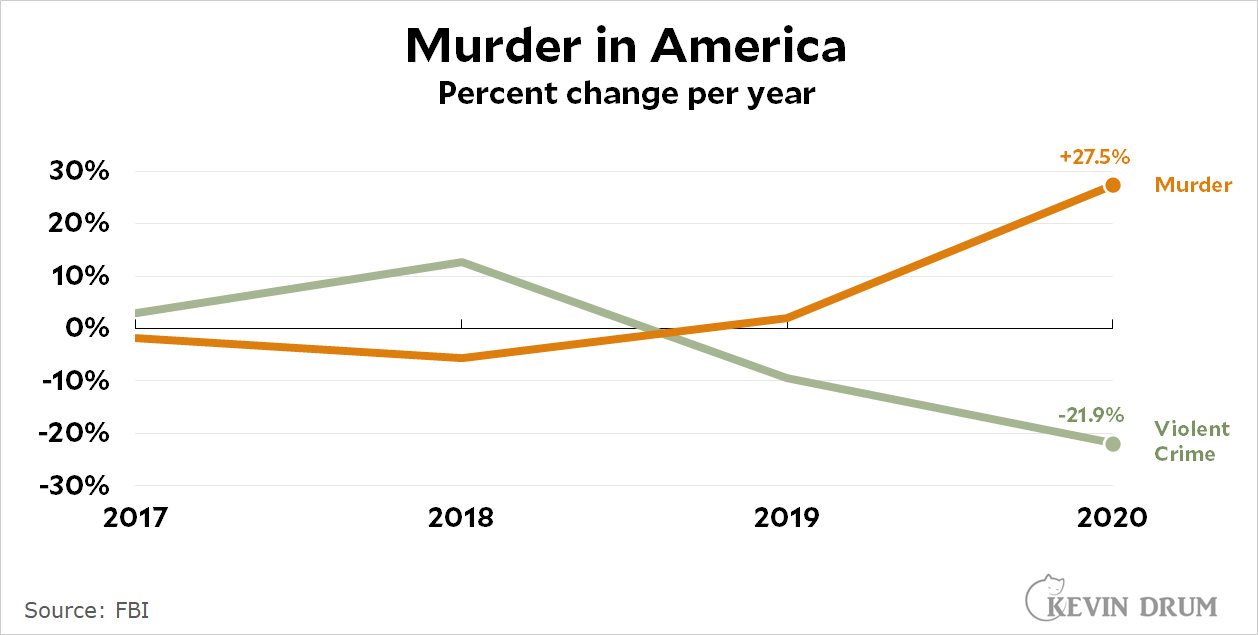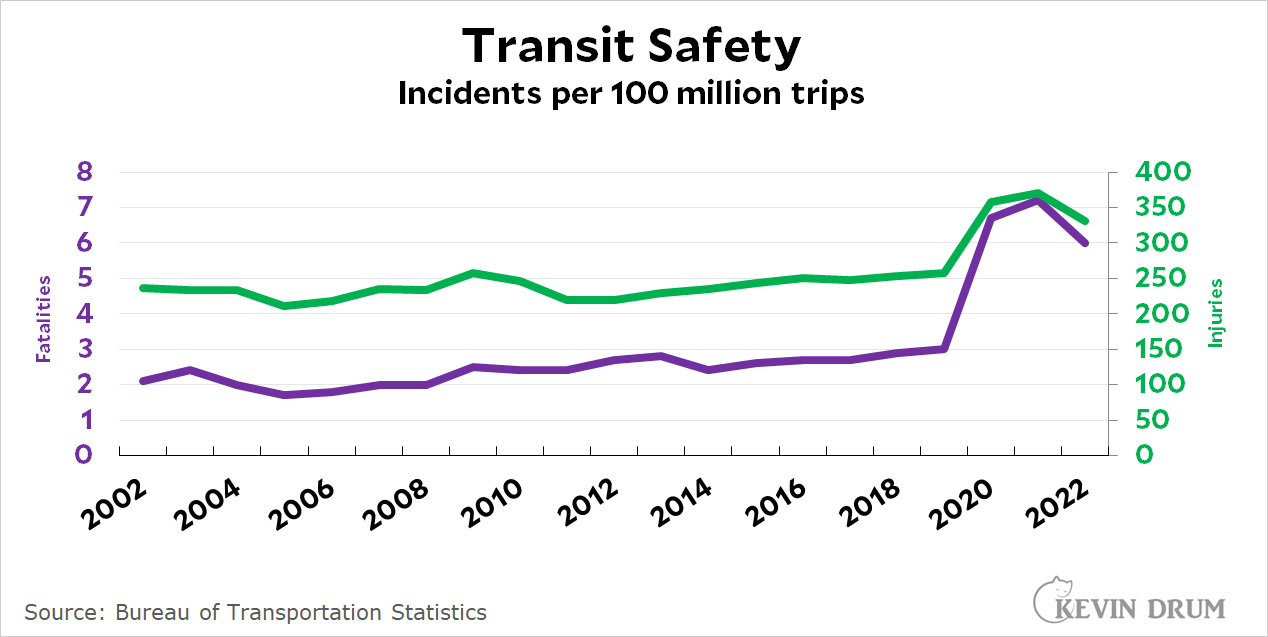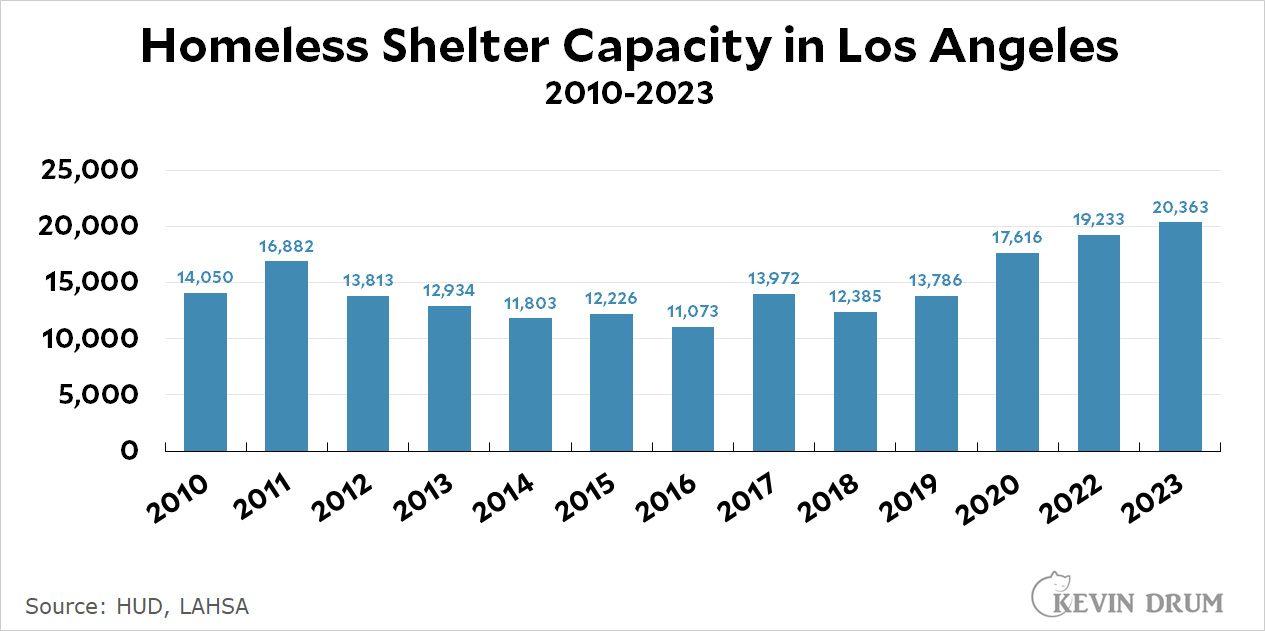Something peculiar occurred to me recently about the pandemic year of 2020. Obviously a lot of things changed: businesses shut down, office towers emptied out, product shortages were endemic, and so forth. But there were also a number of sharp changes that had no obvious connection to the pandemic. For example:
- Pedestrian deaths were up 5% even though driving was down 10%.
- The murder rate soared 27% even though overall violent crime was down.
.

- New business formation skyrocketed even as existing businesses struggled or were shut down.
- Transit fatalities were up by a quarter even though transit use was down by half.
- Auto theft was up even though we were driving less.
You can come up with individual explanations for some of these. Maybe auto thefts were up because new cars were in short supply. Overall, though, there are a whole bunch of these oddities that don't have any straightforward connection to COVID and lockdowns and working from home. Is there a common thread?


